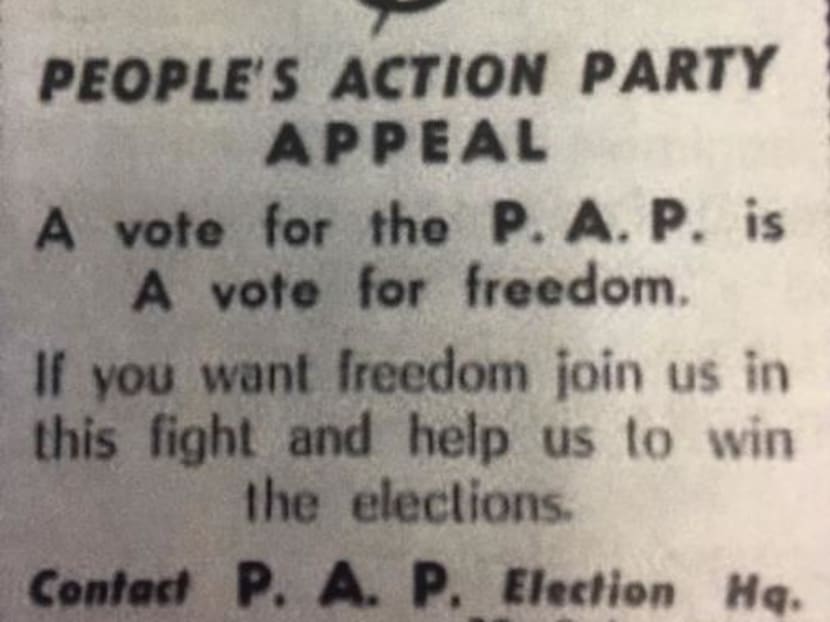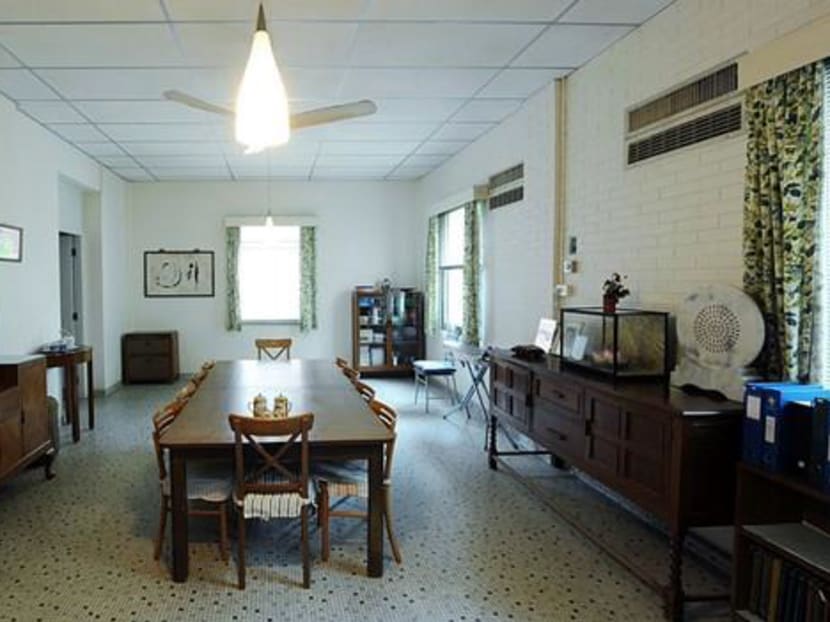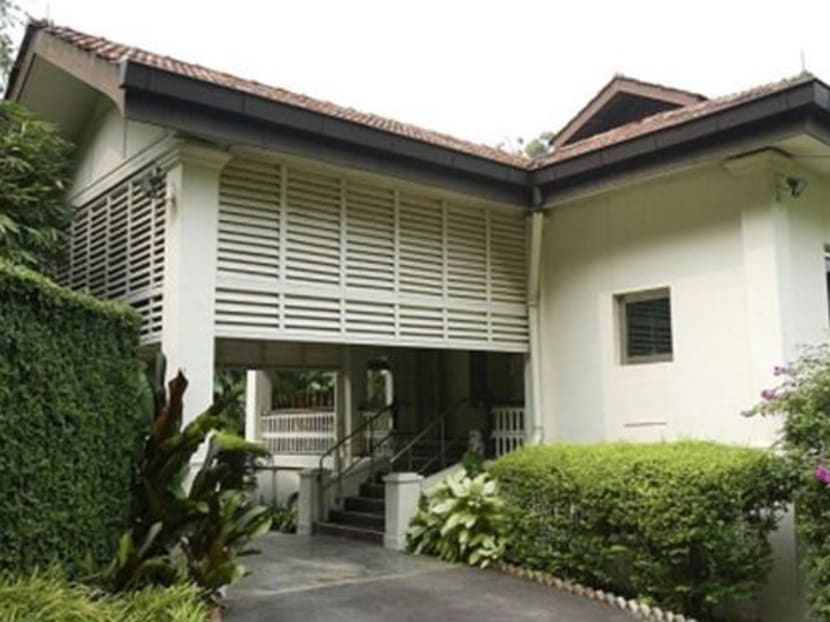Lee Kuan Yew’s Oxley Road home has ‘architectural, heritage and historical significance’
SINGAPORE — As the silent witness to critical meetings and events which “altered the destiny of the country”, the 38 Oxley Road family home of the late Mr Lee Kuan Yew has historical as well as architectural and heritage significance, the National Heritage Board (NHB) and a ministerial committee weighing options for the property have said.
SINGAPORE — As the silent witness to critical meetings and events which “altered the destiny of the country”, the 38 Oxley Road family home of the late Mr Lee Kuan Yew has historical as well as architectural and heritage significance, the National Heritage Board (NHB) and a ministerial committee weighing options for the property have said.
The committee released its report on Monday (April 2), which included a detailed 31-page assessment by the NHB.
The board noted that individuals who had gathered at the bungalow’s basement — such as Mr S Rajaratnam, Mr Devan Nair, Dr Toh Chin Chye and Dr Goh Keng Swee — later became key players who helped build modern Singapore.
It also described the property as a “rarity” with a “complex architectural type with a history dating back to 18th century colonial India”. Of the more than 200 bungalows which have been conserved to date, only an estimated 16 belong to the same style and era as 38 Oxley Road.
Bungalows of this style, built in the late 19th century and early 20th century, are typically one-storey high with pitched, tiled roofs of Chinese influence, lofty ceilings and broad verandahs to shelter occupants from the heat of the sun.
“Over time, it came to be associated with key national events. Today, it testifies to the formation of a new government for Singapore,” said NHB of the bungalow on 38 Oxley Road.
The ministerial committee added: “The Committee assesses that the Property has architectural, heritage and historical significance.”
Mr Lee lived in the property till his death in March 2015, while his daughter Dr Lee Wei Ling is still residing there.
The fate of the property came under the public spotlight in June last year after Dr Lee and Mr Lee Hsien Yang — the younger siblings of Prime Minister Lee Hsien Loong — alleged in a six-page statement that they felt “threatened” in their attempt to carry out their late father’s wish to demolish the house.
The Lee family began renting the property after the Japanese Occupation, at around 1945 and early 1946, at a rate of 80 Straits dollars. The rent was later raised to 118 dollars in 1965.
While he initially thought the rent was reasonable, Mr Lee and his wife, the late Madam Kwa Geok Choo, decided to buy the house when “arrest and assassination attempts became real possibilities”.
After gaining ownership, they fortified the compound with steel gates, additional brick walls and bullet-proof windows.
The family home later became the People’s Action Party’s (PAP) first de-facto headquarters and its address was widely publicised on posters during the 1955 legislative assembly elections. Banners for the barely four-month-old political party were printed at its porch, while the wives of party members sewed cloth rosettes for their husbands in the house.

(Above) In 1981, Mrs Lee Kuan Yew shared with oral archives that she laughed at a published advertisement in the newspapers (The Singapore Tiger Standard, 5 March 1955)”. It already featured the lightning and circle logo, and invited all interested parties to contact the PAP election headquarters at No. 38 Oxley Road between 5 to 9 pm daily. The family home had become the PAP headquarters. Photo courtesty of NHB

(Above) Basement dining room at 38 Oxley Road, October 2011. Photo: Straits Times/ Stephanie Yeow
As political meetings were then forbidden under internal security regulations, their meetings at the basement - dubbed “The Underground” - were often held secretly.
Party members stopped gathering at 38 Oxley Road regularly after the PAP formed the government in 1959, and met instead at City Hall and then the Istana.
In the early 1950s, people also came by the house to seek legal help from Mr Lee, a Cambridge-trained lawyer. In 1954, for instance, students from the Chinese Middle School called on Mr Lee to seek representation for seven students who had been arrested for riots in May 1954, when hundreds of students demonstrated against the mandatory registration for military service.
As a family home, 38 Oxley Road also stood for the values of frugality and discipline that Mr Lee and Mdm Kwa exemplified in both their public and private lives, the NHB report said.
“The architectural simplicity of the house is reflective of the times, the site it sits on, as well as the values of its historic occupants,” it added.
No major structural changes were carried out over the last 30 years, but security was strengthened after 1965 with the addition of bullet-proof window panes, humps on the road in front of the house, and a guarded entrance at the back, among other things. Steel rails were later added to the porch stairs to facilitate Mr Lee’s access.
STRICT GUIDELINES FOR BUILDING PRESERVATION
In his last will, Mr Lee Kuan Yew made clear certain conditions that should fulfilled if 38 Oxley Road is to be preserved.
While stating that his personal wish, and that of his late wife Madam Kwa Geok Choo, is for the property to be “demolished immediately after (his) death” or after his daughter, Dr Lee Wei Ling, “moves out of the house”, Mr Lee also acknowledged that changes in the law, rules and regulations may prevent demolition.
In the scenario that the property is not demolished, Mr Lee’s will — dated December 17, 2013 — stated that the house should “never be opened to others except my children, their families and descendants”.
Compared to conservation, preservation follows stricter guidelines and applies to sites and buildings which are assessed to have high national and historical significance.
The Minister for Culture, Community and Youth can make orders to preserve sites as “national monuments”, after consulting the National Heritage Board (NHB). Once such orders are served upon the property owners and occupiers, the architecture of these properties cannot be modified in any way that contravenes preservation guidelines.
The Preservation of Monuments Act does not stipulate guidelines for movables such as furniture and furnishings, which are considered private property from a legal standpoint. If the NHB intends to retain these, it must enter into private agreements with the rightful property owners.
As 38 Oxley Road is now occupied as a residence, if it is to be preserved, the state is legally required to acquire the site within one year from the date of the preservation order, to “free (its) owner from all forms of imposition arising from preservation”.
The Government will then need to identify an appropriate alternative to residential use for the site, such as a museum, research entity or think tank.
Under the Planning Act, property owners have a right to appeal against the Government’s decision to preserve their properties, but the final decision rests with the National Development Minister.
There are 72 national monuments in Singapore, such as the former Tanjong Pagar Railway Station, the clock tower building in Hwa Chong Institution, the Tower Wing of Goodwood Park Hotel, and various places of worship.
Conservation, on the other hand, allows greater flexibility for the property to be modified. It is typically applied to sites with aesthetic and architectural value.
Conserved buildings are to be restored according to the conservation guidelines under the Urban Redevelopment Authority. These seek to “retain the inherent spirit and original ambience of historic buildings”.
A conserved building can be revamped or adapted to new uses, but its existing structure must be retained by strengthening and repairing the structural elements. “Any alteration or strengthening to structural elements is to be done in the most sympathetic and unobtrusive way, using original methods and materials wherever possible,” the URA’s guidelines state.
With conservation, the owner can continue living in the property or sell it.
More than 7,000 buildings have been conserved since the 1970s, including Alexandra Hospital, Queenstown Public Library and parts of Seletar airbase.
Conservation can be an interim step towards preservation, as has been the course for national monuments such as the Istana Kampong Glam, the Fullerton Hotel and the former JTC headquarters in Jurong.
CORRECTION: An earlier version of the story stated that the Minister for National Development can make orders to preserve sites as “national monuments”, after consulting the National Heritage Board. This is incorrect. It should be the Minister for Culture, Community and Youth. We are sorry for the error.







